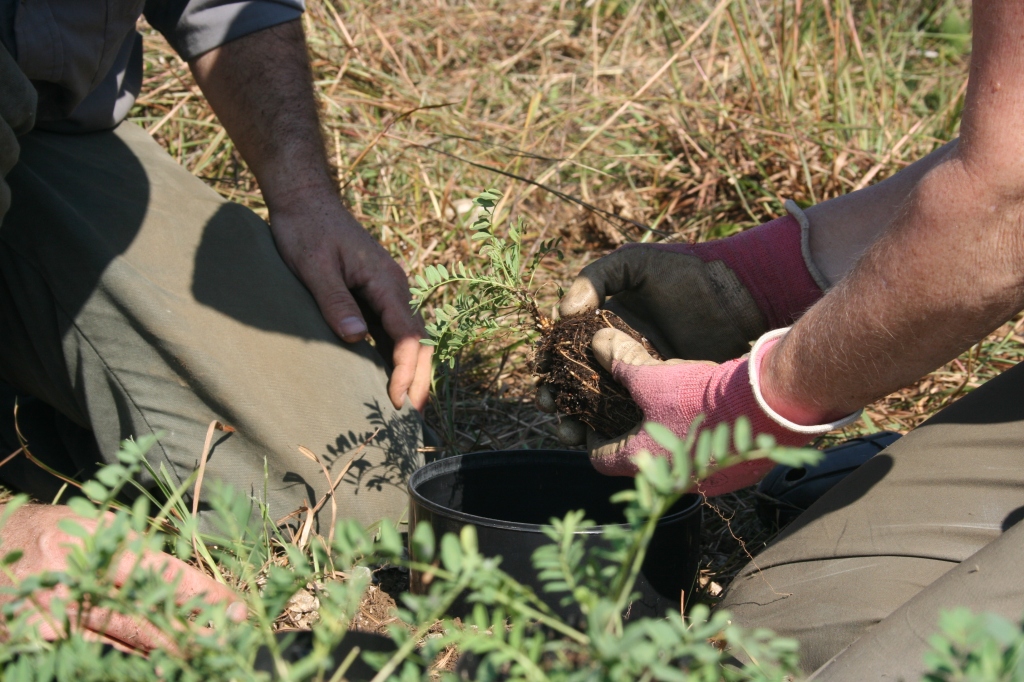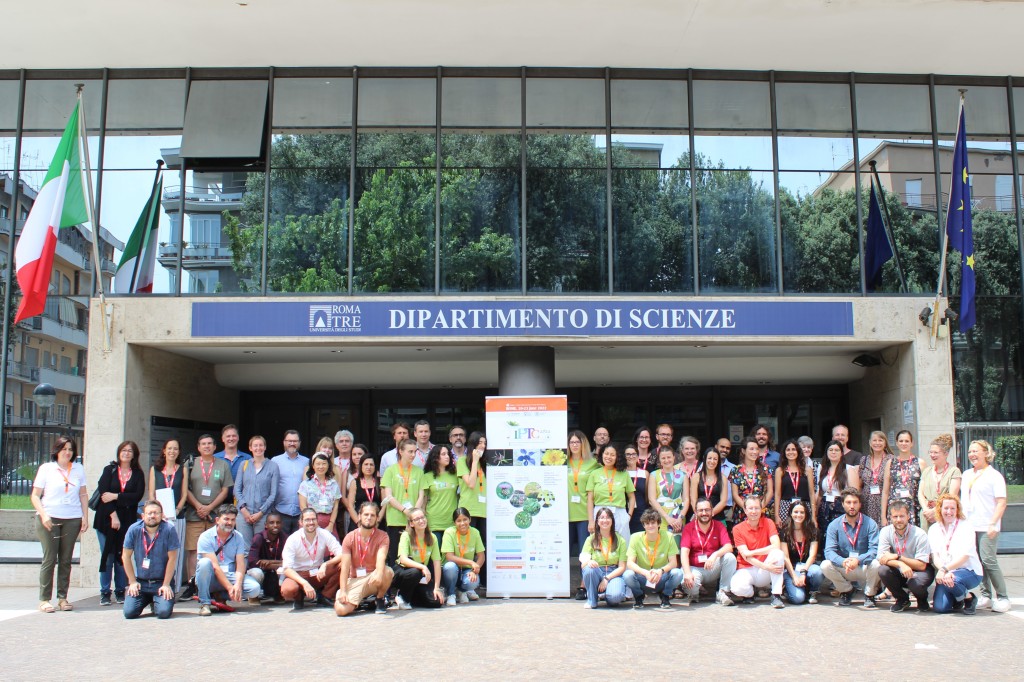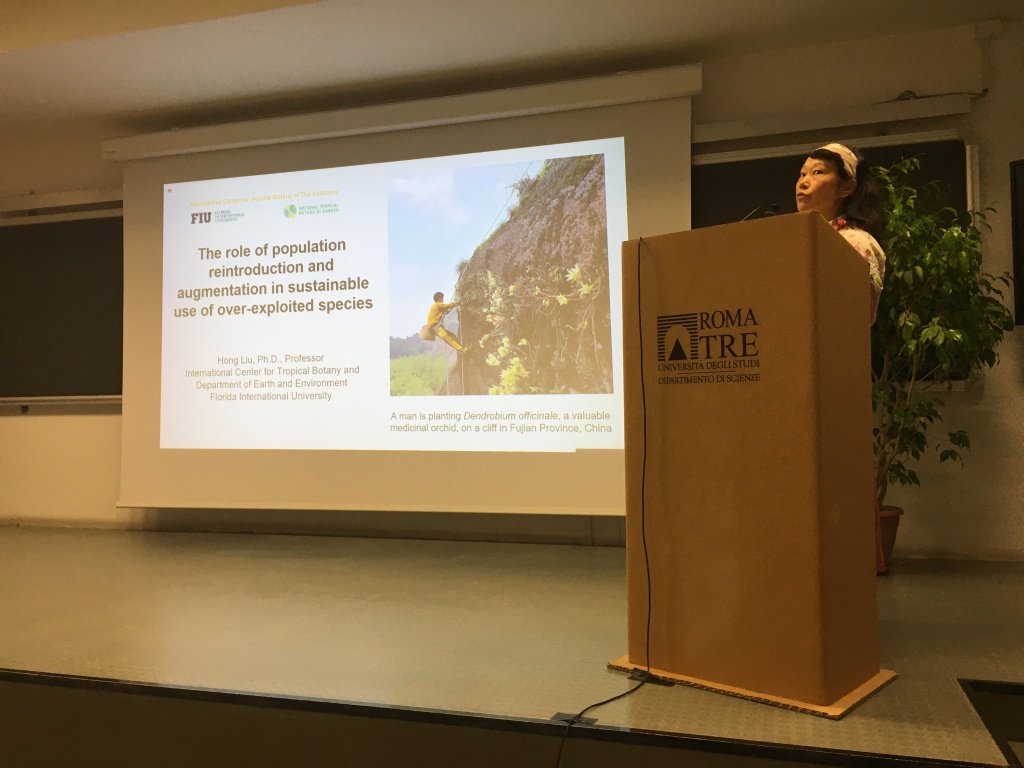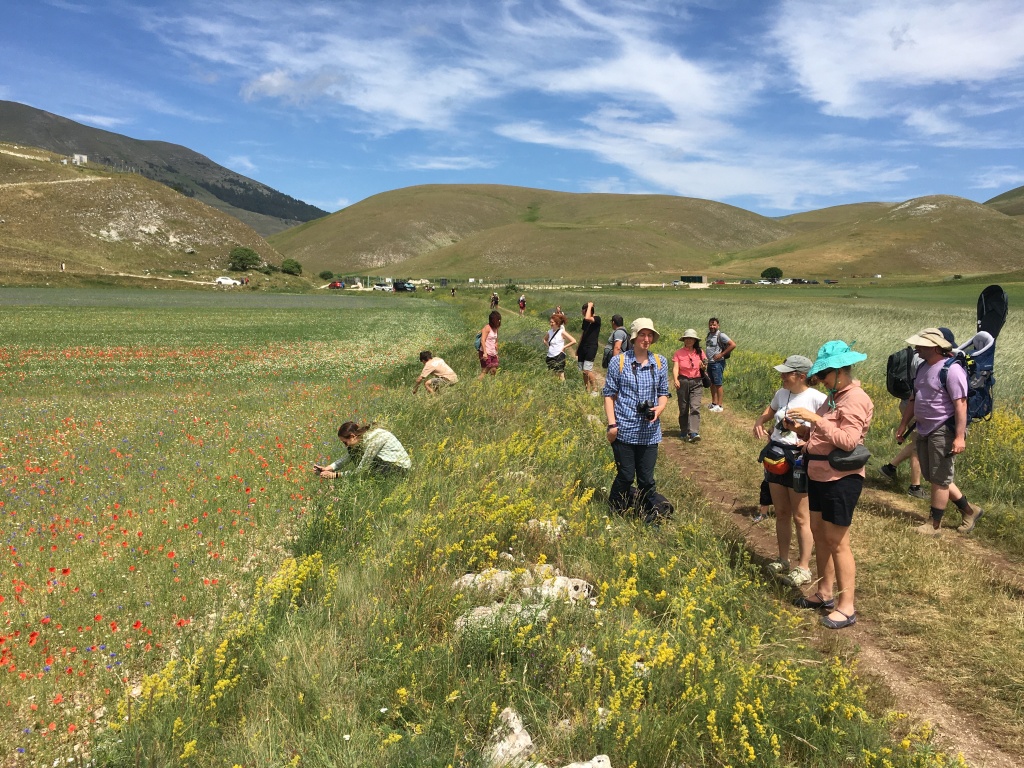By Thomas Abeli, Department of Science, Roma Tre University
Many plant species around the globe are threatened with extinction or have already been extirpated from the wild as a result of habitat loss, pollution, alien invasive species, and climate change. Among the possibilities in the toolkit of conservation biologists to halt and reverse the loss of plant diversity, translocation is now a commonly used approach. Translocation is defined by the International Union for the Conservation of Nature (IUCN) as a deliberate transfer of species from one site to another for conservation purposes that includes different types of movements: population reinforcement of small and genetically depauperate populations, reintroduction of species within their native range in sites where they occurred in the past and from where have been extirpated, and conservation introduction of species outside their indigenous range. While the primary motivation for translocation is often the recovery of single species, translocation also plays a key role in ecosystem restoration – enabling the United Nations to achieve global goals for its 2020-2030 Decade of Ecosystem Restoration.

Plant translocation is sometimes highly successful, sometimes dramatically discouraging and unsuccessful. Such variability in translocation outcome is rooted in the still poor understanding and standardization of techniques given that the field of translocation science remains in an early stage of scientific development. Translocation programs are challenging and complex, often requiring an interdisciplinary team that may include conservation biologists, restoration ecologists, taxonomists, geneticists, practitioners, policy makers, indigenous peoples, citizen scientists, and local community members.
It is common in science to organize periodical conferences where scientists from around the world meet and discuss recent findings and share ideas in a specific field. Although plant translocation is often discussed in national and international conservation biology conferences, we lacked a dedicated conference or forum to share experiences and improve plant translocation science and practice to deliver more effective conservation outcomes. With the aim of filling this gap, a group of field-leading scientists developed the 1st International Plant Translocation Conference as a new forum to share ideas and advance the field of plant translocation. After multiple delays over the past two years due to the COVID-19 pandemic, the Science Department of the Roma Tre University hosted the inaugural International Plant Translocation Conference (IPTC2022) from 20 to 23 June 2022 in Rome, Italy. Designed as a hybrid conference platform to promote global participation and inclusion, the conference included 71 participants (including online attendees) representing 19 countries and 5 continents.

With nine international keynote speakers from the International Union for Conservation of Nature (IUCN), the Center for Plant Conservation (United States), the Missouri Botanical Garden, the Curtin University (Australia), the Meise Botanical Garden (Belgium), the Liverpool John Moores University (United Kingdom), the University of Cagliari, the University of Pavia and the Botanical Garden of Rome (La Sapienza University), along with nearly 40 talks, a poster session, workshop, social events, and a field trip, the IPTC represented an outstanding opportunity for the global community of conservation biologists involved in plant translocation to present recent findings, best practices, learn from each other’s experiences, initiate new collaborations, and transfer knowledge to the next generation of conservation scientists and practitioners. The congress was organized around five thematic sessions covering topics related to translocation techniques, ex situ conservation approaches to support translocation, data sharing and ethics, and translocation case studies from the Mediterranean bioclimatic region.
Additionally, the congress discussed the controversial topics of assisted migration and de-extinction, which generate international news headlines. Assisted migrations are debated on one side for the opportunity they represent to save species threatened by climate change and, on the other side, for the risks they imply for recipient ecosystems. De-extinctions represent the last frontier of conservation. While still in the hypothetical stage, the idea of reviving extinct species is fueling a wide scientific debate among supporters, opponents, and those who advocate conservation approaches that are more pragmatic. Research presented at the IPTC 2022 suggested that herbarium specimens and ex situ collections could support plant de-extinction perhaps more easily than resurrecting extinct animal species via back-breeding, cloning and synthetic biology.

The importance for scientists to meet in conferences has been exacerbated over the past two years when the COVID pandemic confined conferences to virtual online events. While virtual conferences remain an important vehicle for exchange of scientific knowledge, the lack of personal interactions through interactive workshops, brainstorming through informal discussions, and social events can stymie engagement and collaborative development. As one of the first post-pandemic congresses to meet in person, the number of new connections and collaborations developed during the IPTC conference should spur many advancements in translocation science.

For example, originating from informal discussions at social events a large group of IPTC attendees are now preparing a manuscript on best practice guidelines for mitigation translocations. The conference also revived discussion about developing a global interoperable register and database of plant translocation – a feature that would undoubtedly accelerate synthesis and meta-analysis and surely benefit the international community. Finally, a special issue of Plant Ecology entitled “Advances in Plant Translocation” will be dedicated to articles derived from IPTC talks.
More broadly, the achievement of the first IPTC and the following editions, are expected to contribute to the United Nations 2030 Agenda that outlines the medium-term strategy to reverse the trend of global biodiversity loss, to integrate policies of sustainable exploitation of natural resources on which the well-being of the growing world population depends, and to reduce and mitigate conflicts between man and the environment. In particular, the IPTC conference will impact the Sustainable Development Goal 15 “Life on Land”, as well as the more specific United Nations initiative “Decade of Ecosystem Restoration”. The organising committee of the IPTC2022 is already at work to identify a suitable location for the next IPTC conference, ideally within the next two/three years. Stay tuned for more exciting news and developments.
For more on translocations, see Translocating a threatened totem by Adam Cross